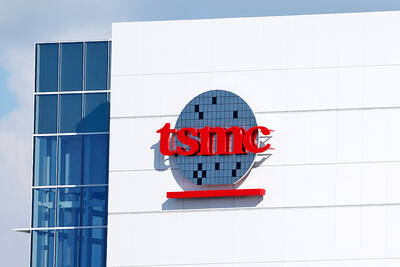Mead, that drink of Viking saga and medieval verse, is making a comeback. But this is not your ancestors’ honey wine.
“It’s not just for the Renaissance fair anymore,” says Becky Starr, co-owner of Starrlight Mead, which recently opened in an old woven label mill in this little North Carolina town.
In fact, this most ancient of alcoholic libations hasn’t been this hot since Beowulf slew Grendel’s dam and Geoffrey Chaucer fell in with the Canterbury pilgrims at the Tabard.
In the past decade, the number of “meaderies” in the US has tripled to around 150, says Vicky Rowe, owner of Gotmead.com, which describes itself as “the Internet’s premier resource for everything to do with mead.”
“I literally get new notifications of meaderies at least every couple of weeks,” says Rowe, who runs the Web site from her home in the woods north of Raleigh.
“So they’re just popping up all over and a lot of those are wineries that have decided to add mead to their mainstream product lines, which is just incredible,” she says.
Traditional mead is made with three ingredients — honey, water and yeast. The biggest hurdle has been overcoming that centuries-old misconception that something made from honey has to be sweet.
However, as Rowe is quick to point out, grapes can be pretty sweet, too.
“And just like wine, mead can be as dry as a bone or it can be so sweet it makes your fillings hurt,” she says. “And it depends on how it’s made.”
The honey, water and yeast are just the base. There are fruit-flavored meads, called melomels. There are methyglyns made with herbs and spices. And then there are what Rowe calls “weirdomels, which is mead made with lots of other things.”
Because it requires no human intervention, many believe mead is the world’s oldest alcoholic beverage. Traces of a mead-like substance were found in a 9,000-year-old Chinese burial chamber.
Until about 1500, mead was the alcoholic beverage of choice, Rowe says.
“Because cultivated grapes were only for the rich, and at that point in time the poor folks, they couldn’t get it,” says Rowe, who earned the nickname “Mead Wench” after years of wandering Renaissance fairs laden with wineskins full of her own homemade meads. “They had thin beer that they could make at home or they had mead, because honey was readily available to anybody.”
In Beowulf, the Old English epic heroic poem, the great mead-hall Heorot is the scene of most of the action. It is where King Hrothgar “with fair courtesy quaffed many a bowl of mead,” and where the “fell monster” Grendel slaughtered 30 thanes passed out “after the drinking of the mead.”
Chaucer’s 14th-century Canterbury Tales contain several references to mead or “methe.” But with the opening of the New World and its sugar plantations, Rowe says, “mead began a slow decline ... and by the 1700s was almost nonexistent.”
That began to change with the spread of Renaissance fairs and re-enactment groups like the Society for Creative Anachronism, and the growth of the craft beer industry.
Picking up where Chaucer left off, J.K. Rowling has introduced a whole new generation of readers to the honey wine. Devotees will no doubt recall how Ron Weasley was nearly done in by a poisoned bottle of Madame Rosmerta’s oak-matured mead in Harry Potter and the Half-Blood Prince.
Dogfish Head Craft Brewery in Delaware markets a mead-like ale called The Midas Touch. Based on the residue from drinking vessels discovered inside the golden king’s 2,700-year-old tomb, the concoction is described as “biscuity” and “succulent,” with hints of honey, saffron, papaya and melon.
No one keeps tabs on how much mead is made or sold. The US Alcohol and Tobacco Tax and Trade Bureau’s wine statistical releases do not list honey wine as a separate product.
But Mike Faul, founder of Rabbit’s Foot Meadery outside San Francisco, says his production is growing about 30 percent a year.
He distributed 6,000 cases last year to customers as far away as Japan and Ireland.
During a recent wine-tasting tour, Mallory Radcliffe and her family stopped by Starrlight. The Fuquay-Varina, North Carolina woman had tried mead before, but she was surprised by the range of the Starrs’ offerings — from the almost clear semisweet to a deep-red blackberry.
A golden peach was the clear favorite.
“When they add the fruit, you have a different vibe,” she said. “Real light. Real enjoyable. Real easy to drink.”
“We’ve seen a big increase in the number of people that know actually what mead is, which is surprising to us,” says Becky Starr, who is wearing a black T-shirt emblazoned with the words “Got Mead?” in ancient Norse runes.
But there are still plenty of visitors wanting to know where they grow their grapes. The Starrs are working on them.

Real estate agent and property developer JSL Construction & Development Co (愛山林) led the average compensation rankings among companies listed on the Taiwan Stock Exchange (TWSE) last year, while contract chipmaker Taiwan Semiconductor Manufacturing Co (TSMC, 台積電) finished 14th. JSL Construction paid its employees total average compensation of NT$4.78 million (US$159,701), down 13.5 percent from a year earlier, but still ahead of the most profitable listed tech giants, including TSMC, TWSE data showed. Last year, the average compensation (which includes salary, overtime, bonuses and allowances) paid by TSMC rose 21.6 percent to reach about NT$3.33 million, lifting its ranking by 10 notches

SEASONAL WEAKNESS: The combined revenue of the top 10 foundries fell 5.4%, but rush orders and China’s subsidies partially offset slowing demand Taiwan Semiconductor Manufacturing Co (TSMC, 台積電) further solidified its dominance in the global wafer foundry business in the first quarter of this year, remaining far ahead of its closest rival, Samsung Electronics Co, TrendForce Corp (集邦科技) said yesterday. TSMC posted US$25.52 billion in sales in the January-to-March period, down 5 percent from the previous quarter, but its market share rose from 67.1 percent the previous quarter to 67.6 percent, TrendForce said in a report. While smartphone-related wafer shipments declined in the first quarter due to seasonal factors, solid demand for artificial intelligence (AI) and high-performance computing (HPC) devices and urgent TV-related orders

Prices of gasoline and diesel products at domestic fuel stations are this week to rise NT$0.2 and NT$0.3 per liter respectively, after international crude oil prices increased last week, CPC Corp, Taiwan (台灣中油) and Formosa Petrochemical Corp (台塑石化) said yesterday. International crude oil prices last week snapped a two-week losing streak as the geopolitical situation between Russia and Ukraine turned increasingly tense, CPC said in a statement. News that some oil production facilities in Alberta, Canada, were shut down due to wildfires and that US-Iran nuclear talks made no progress also helped push oil prices to a significant weekly gain, Formosa said

MINERAL DIPLOMACY: The Chinese commerce ministry said it approved applications for the export of rare earths in a move that could help ease US-China trade tensions Chinese Vice Premier He Lifeng (何立峰) is today to meet a US delegation for talks in the UK, Beijing announced on Saturday amid a fragile truce in the trade dispute between the two powers. He is to visit the UK from yesterday to Friday at the invitation of the British government, the Chinese Ministry of Foreign Affairs said in a statement. He and US representatives are to cochair the first meeting of the US-China economic and trade consultation mechanism, it said. US President Donald Trump on Friday announced that a new round of trade talks with China would start in London beginning today,